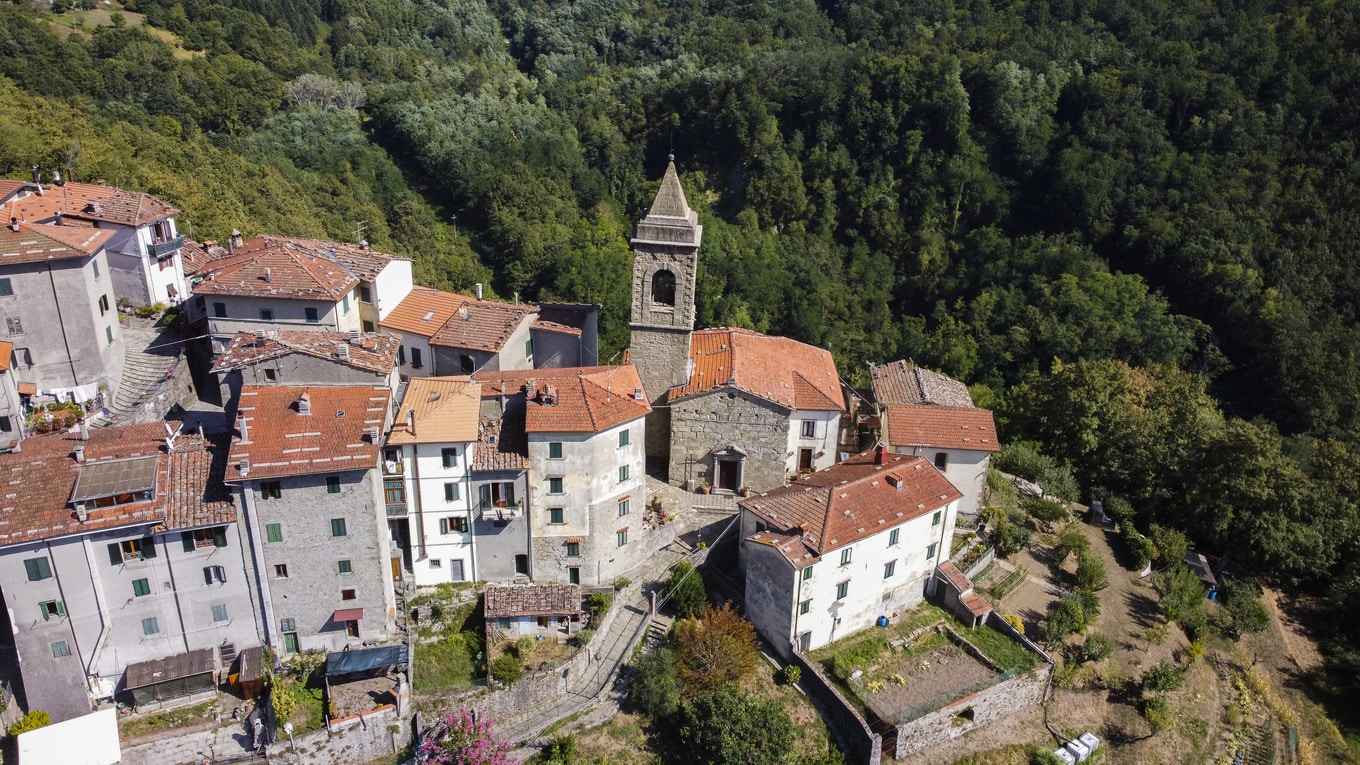Mammiano
There are magical places that have the power to attract people to themselves and gather them together to create something unique. There is a place like this on the Pistoia mountains, a large plot of land where, almost 15,000 years ago, people started gathering and organizing in the summer before moving to the mountains for hunting. The path that leads to the nearby Castruccio bridge was also used, as evidenced by the fragments found. That was probably the first settlement on the Pistoia mountains and magically, after many years, it also became the home of the most important attraction in the territory of San Marcello Piteglio: the Suspension Bridge.
However, of the thousands of years that have passed, some have been truly significant to close this circle of coincidences.
The birth of Mammiano is much more recent than one might think and, like many other villages in the area, it is linked to the instability of the conflict between Pistoia and Lucca. But unlike other villages, Mammiano had a second important opportunity and it was able to make the most of it. The construction of the Magona ironworks in the lower part of the village – still today Mammiano can be divided into Mammiano Alto and Mammiano Basso – gave a new industrial development to the locality by moving the nerve center of the village in the lower part and leaving to the upper one just the honor of the church of San Biagio. The church, in addition to hosting numerous ancient artifacts, houses the tomb of Lorenzo Pacini, merchant and patron who will always remain in the heart of the inhabitants of the mountain for allowing the construction of the San Marcello hospital. Mammiano Basso owes its initial development to the construction of the Magona ironworks in 1500. Following the opening of the Grand Ducal road, the ironworks was enlarged and modernized. The high production costs and the difficulty of transporting the material lead to the closure of the ironworks, which was taken over a year later by the Turri family, who modified the production by starting the processing of copper and its alloys. The Valle Lune Association has cleaned up part of the remains of the Ferriere di Fondo from the thick vegetation that hid it. Subsequently, the restored section, part of the ironworks and sieve, was placed under bond together with the Torre di Rimando, by the Superintendence for Architectural Heritage. The Torre di Rimando, part of a plant that contributed to the functioning of some ironworks machinery, is the only example existing in Italy. On the top of the tower there was a large iron pulley. Further downstream, the force of the water spun another pulley that transmitted the movement, via a steel cable, to the return tower and from here to another wheel placed on the roof of the Middle Ironworks.
The hydro-wind trumpets are still intact and visible together with the large drop-shaped tank and the vaults that supported it. This system replaced the bellows used to keep the fire going. These exploited the principle of the siphon created through the fall of the water in a vertical shaft at the top of which some slits opened, which had the task of extracting the air.
Thus, a mixture of air and water was created. It fell into a tank called ‘Bottino’. On its bottom there was a large slab of stone on which the mixture was going to break, freeing the air that was collected in the upper part of the deposit and, from there, through special conduits, it was conveyed to the ovens and forges.
The Suspension Bridge was built in 1922 as a connection for factory employees so that they could get to work in a shorter time without having to cross the whole valley. An unparalleled engineering work for the time and which for many years remained undefeated in Europe and in the whole world. A must-see attraction, at least if you do not suffer from vertigo.

